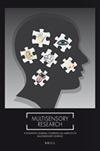解决动作电子游戏游戏体验与自然多感官场景中视觉搜索之间的关联问题
IF 1.8
4区 心理学
Q3 BIOPHYSICS
引用次数: 0
摘要
之前对日常玩动作电子游戏的影响进行的研究表明,玩动作电子游戏可以改善各种认知过程,包括改善注意力任务。然而,几乎没有证据表明,玩动作电子游戏对认知的益处可以从简化的单感官刺激推广到多感官场景--这是自然、日常生活环境的基本特征。本研究探讨了视频游戏经验是否会影响在此类多感官场景中搜索时的跨模态一致性效应。我们比较了动作视频游戏玩家(AVGPs)和非视频游戏玩家(NVGPs)在视觉搜索任务中对现实场景视频剪辑中嵌入的物体的表现。我们用性别均衡的样本进行了两次相同的在线实验,共收集了 2,000 个样本。 总体而言,数据重复了之前的研究结果,即与中性或不协调的听觉事件相比,当视觉目标伴有语义一致的听觉事件时,搜索效果更佳。然而,根据研究结果,在整个搜索任务中,AVGPs 并未持续优于 NVGPs,他们使用多感官线索的效率也未优于 NVGPs。以自我报告的性别为变量进行的探索性分析表明,经验丰富的男性和女性 AVGPs 在处理跨模态线索时的反应策略可能存在差异。这些研究结果表明,在将 AVG 经验的优势推广到现实的跨模态情境中时,应谨慎行事并考虑与性别相关的问题。本文章由计算机程序翻译,如有差异,请以英文原文为准。
Addressing the Association Between Action Video Game Playing Experience and Visual Search in Naturalistic Multisensory Scenes
Prior studies investigating the effects of routine action video game play have demonstrated improvements in a variety of cognitive processes, including improvements in attentional tasks. However, there is little evidence indicating that the cognitive benefits of playing action video games generalize from simplified unisensory stimuli to multisensory scenes — a fundamental characteristic of natural, everyday life environments. The present study addressed if video game experience has an impact on crossmodal congruency effects when searching through such multisensory scenes. We compared the performance of action video game players (AVGPs) and non-video game players (NVGPs) on a visual search task for objects embedded in video clips of realistic scenes. We conducted two identical online experiments with gender-balanced samples, for a total of . Overall, the data replicated previous findings reporting search benefits when visual targets were accompanied by semantically congruent auditory events, compared to neutral or incongruent ones. However, according to the results, AVGPs did not consistently outperform NVGPs in the overall search task, nor did they use multisensory cues more efficiently than NVGPs. Exploratory analyses with self-reported gender as a variable revealed a potential difference in response strategy between experienced male and female AVGPs when dealing with crossmodal cues. These findings suggest that the generalization of the advantage of AVG experience to realistic, crossmodal situations should be made with caution and considering gender-related issues.
求助全文
通过发布文献求助,成功后即可免费获取论文全文。
去求助
来源期刊

Multisensory Research
BIOPHYSICS-PSYCHOLOGY
CiteScore
3.50
自引率
12.50%
发文量
15
期刊介绍:
Multisensory Research is an interdisciplinary archival journal covering all aspects of multisensory processing including the control of action, cognition and attention. Research using any approach to increase our understanding of multisensory perceptual, behavioural, neural and computational mechanisms is encouraged. Empirical, neurophysiological, psychophysical, brain imaging, clinical, developmental, mathematical and computational analyses are welcome. Research will also be considered covering multisensory applications such as sensory substitution, crossmodal methods for delivering sensory information or multisensory approaches to robotics and engineering. Short communications and technical notes that draw attention to new developments will be included, as will reviews and commentaries on current issues. Special issues dealing with specific topics will be announced from time to time. Multisensory Research is a continuation of Seeing and Perceiving, and of Spatial Vision.
 求助内容:
求助内容: 应助结果提醒方式:
应助结果提醒方式:


